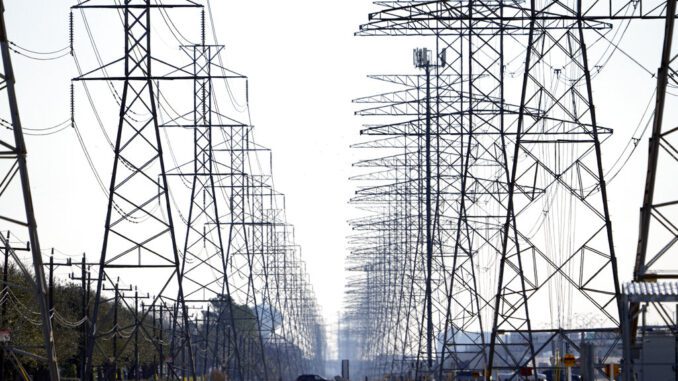
For the holidays this year, Duke Energy gave more than 500,000 customers the “gift” of rolling blackouts across North and South Carolina during one of the region’s coldest weekends in decades.
Overwhelming demand for electricity during the arctic plunge on Christmas Eve led Duke Energy to impose emergency power outages, often lasting hours with little or no warning for customers, in an effort to avoid a system-wide blackout. Needless to say, the unexpected outages raised alarms with public officials and energy experts.
“I’m deeply concerned about people who lost power and who didn’t get notice about rotating outages,” Gov. Roy Cooper tweeted on December 26. “I’ve asked Duke for a complete report on what went wrong and for changes to be made.”
It requires a special chutzpah from Gov. Cooper to demand answers from Duke Energy executives when it is his policies that will likely lead to more such calamities in the future. The goal of Cooper’s Clean Power Plan, which aims to reduce utility carbon emissions 70% from 2005 levels by 2030, is to intentionally shut down fossil fuel electricity generation in favor of intermittent, unreliable “renewable” sources like hydro, wind and solar — literally taking us back to a pre-1859 economy before oil and gas were discovered in America.
In fact, as I pointed out in testimony on the Governor’s Clean Power Plan before the North Carolina Utilities Commission last September, Cooper’s staggering $100 billion force-fed green energy transition is creating systemic vulnerabilities for our grid. The centerpiece of this insanity is shuttering Duke’s perfectly serviceable 8,845-megawatt coal fleet as soon as possible.
But a careful examination of the data from the U.S. Energy Information Administration (EIA) shows just how important those coal plants were to avoiding even more widespread and devastating blackouts during a generational freeze over the Christmas weekend. When North Carolinians needed energy most, it was nuclear, natural gas and those dreaded coal plants that held the grid together and provided the lion’s share of the electricity generation.
The work horse during the crisis was Duke’s nuclear fleet (an unwavering 7,390 MWh). If environmentalists really cared about carbon emissions and not just lining their pockets by adding costly, inefficient, and habitat-destroying solar projects to our energy grid, they’d be clamoring for more carbon-free, dependable nuclear generation as soon as possible.
Solar energy proponents would have you believe renewables saved the day when the grid was in jeopardy. But renewables were a non-factor in meeting peak demand. Solar ramped up that sunny Christmas Eve, but it contributed zilch to the supply when the temperatures were coldest and demand highest. According to the data, solar was not generating any power at 4 a.m. on Dec. 24 when the rolling blackouts were first being considered (because it was dark out) nor was solar contributing any power to the grid when system demand peaked at 7 a.m. (because it was still dark out)
Consider how much worse this situation could have been had this incident occurred sometime other than Christmas weekend, when most of the state’s manufacturing plants were offline due to planned holiday shutdowns. Approximately 20% of Duke Energy’s total system demand was not online, yet peak demand still outpaced supply to the point where rolling blackouts became necessary to prevent a disaster. If this had happened on a busy, cold January weekday with the non-residential load operating at normal levels, the outcome would have catastrophic.
So why, after more than a century and a half of affordable and dependable energy powering the most prosperous country in the world, are we suddenly experiencing third-world blackouts and skyrocketing electricity rates? The answer is obvious. Across America, cheap reliable coal, gas, and nuclear power plants are being prematurely retired, and replaced by heavily subsidized, unreliable wind and solar energy.
As we just experienced, intermittent energy sources that work less than half the time (solar) or rarely (wind) can’t possibly replace consistent, 24/7 electricity generation from nuclear and fossil fuels, no matter how many billions we spend on the fantasy.
In fact, the North American Electric Reliability Corporation has long warned about these system-wide grid vulnerabilities. A recent NERC report cautioned that fossil-fuel plants are being taken offline dangerously fast during a time of rising electricity demand, putting much of the country at risk of grid failure and blackouts during extreme weather. Like a visit from the Ghost of Christmas Future, we got a glimpse into that dystopia this holiday season.
The environmental lobby dismisses such warnings and blames the weekend’s power outages on a “bomb cyclone” supposedly caused by climate change. But frigid storms happened before climate change (whatever happened to “global warming”?) became the default political explanation for everything. The coldest Christmas in a half-century was a near-run disaster, and unless the political class wakes up, next time will be far worse.
Bradford Muller, who testified before the North Carolina Utilities Commission, is Vice President of Corporate Communications at Charlotte Pipe and Foundry, a 121-year-old manufacturer based in Charlotte.
